Underwired bras seem to be the Marmite of the lingerie world; while I am forever reading tweets, articles and even press releases about how supposedly uncomfortable they are, they’re still the primary style of bra available in stores today, meaning plenty of people out there prefer them. But what do these love-’em-or-hate-’em wires do? You probably know that they play a role in adding support to the bra, but how do they do it?
Not all underwires are the same, and they vary by more than just size. They come in different shapes, such as the deep U of a typical strapless bra underwire versus the more J-like shape of a plunge bra underwire. They also come in different materials, though most are metal, plus different rigidities – full-bust bras tend to use sturdier underwires, so that they can withstand the weight of a heavier bust without warping or snapping. However, all underwires serve the same three key functions: shaping, separating, and supporting.
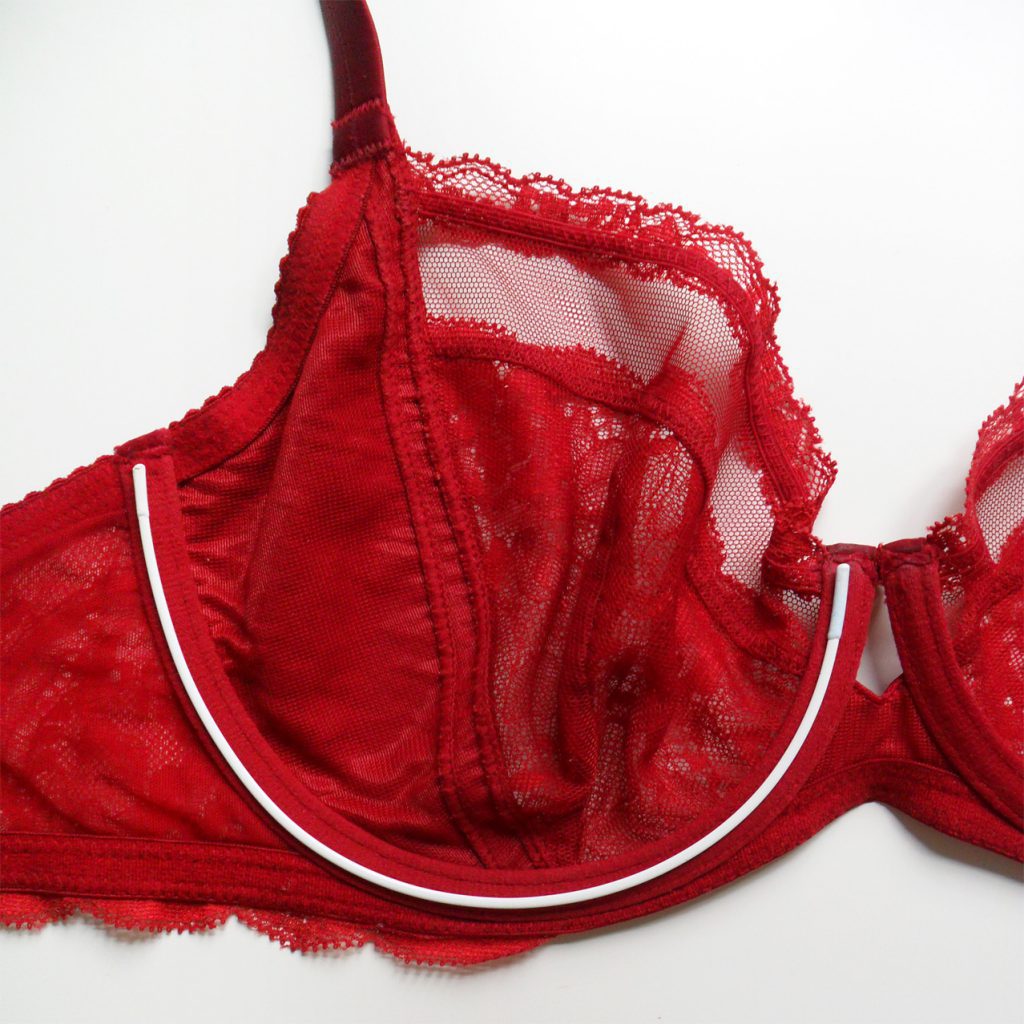
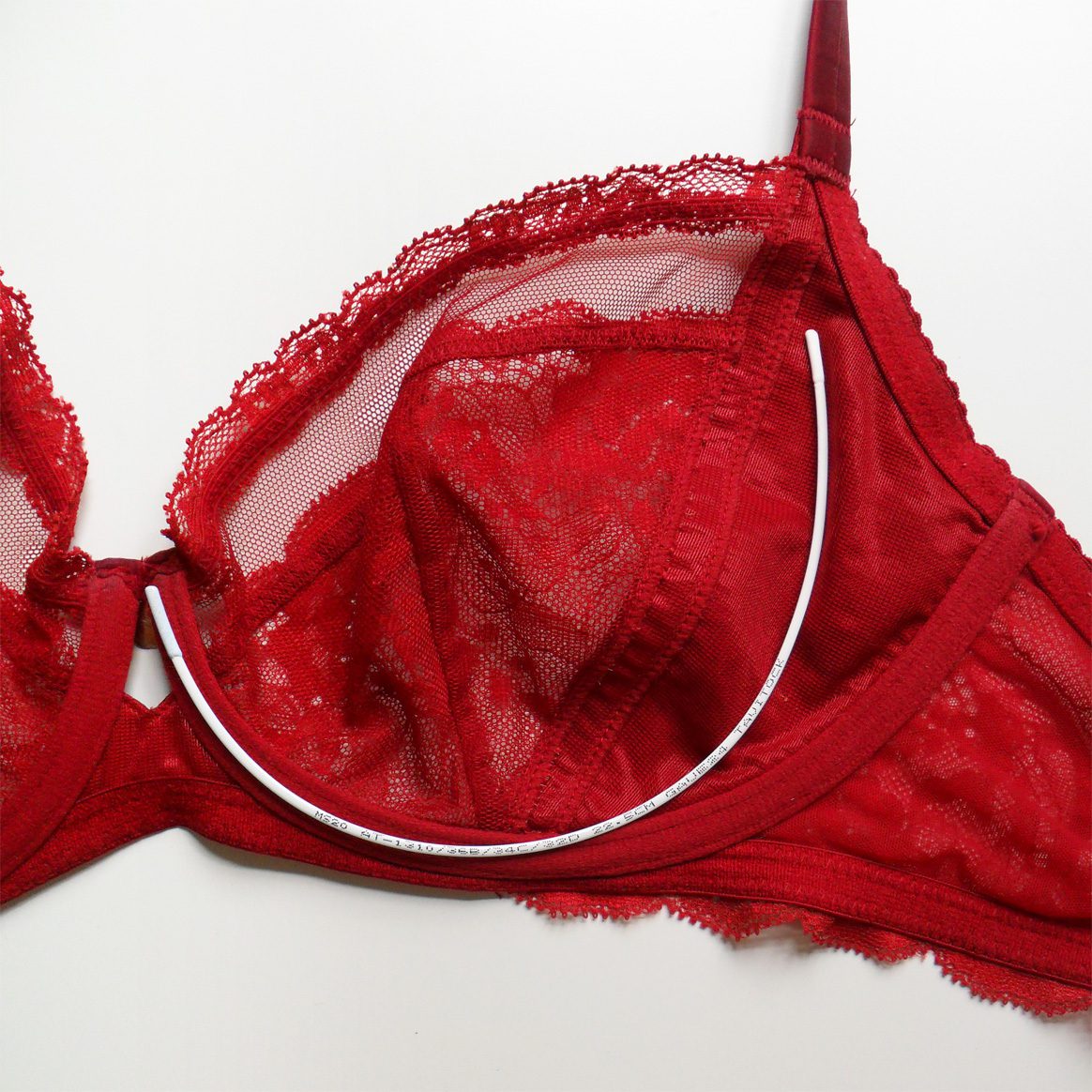
How underwires shape the breasts
You can think of an underwire as a mold for your breast. It gathers up the tissue and holds it in, channeling it into a specific shape. Remember that every time you put a bra on, you should be scooping your breast tissue into the cups so that the wire outlines your breast rather than sitting on top of it. You want your bust entirely inside the underwires so that they can do their job correctly (and so that they’re comfortably-positioned!).
Most underwired bras are designed to bring breast tissue that’s at the outer sides inwards, effectively creating a narrower breast shape. With the bra on, any tissue that was splaying outwards can no longer do that so instead it sticks out forwards, hence an underwired bra can help to create a more projected shape. Underwires also help to create symmetry on those with uneven breasts, since the underwire shape is mirrored perfectly on either side.
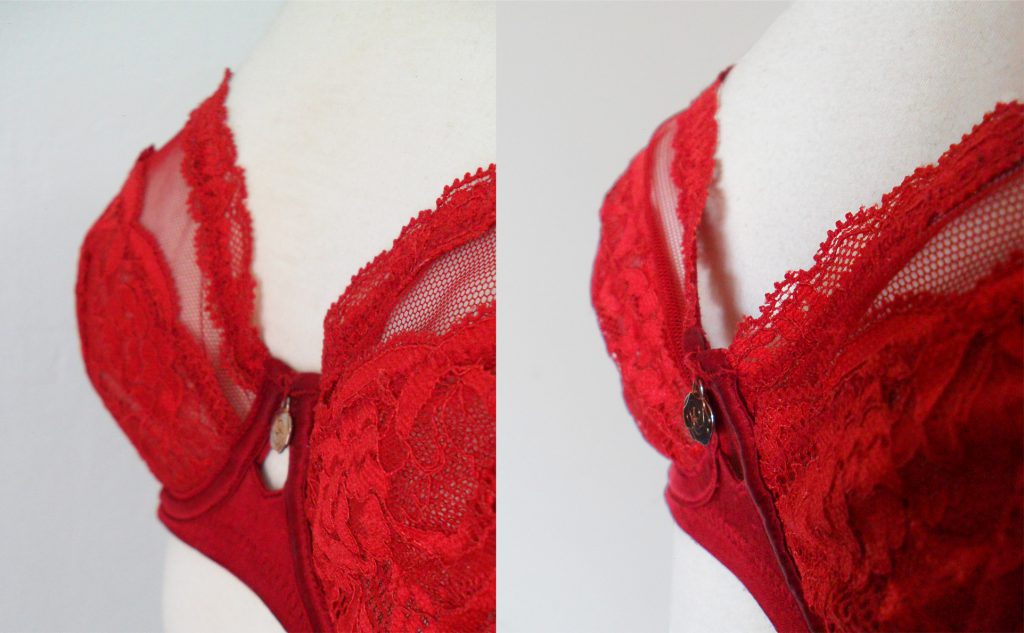
How underwires separate the breasts
Underwires don’t only hold tissue in by the underarm, but also at the centre-front. In a well-fitting bra, the underwire sits flat against your sternum between the breasts, holding them apart rather than allowing them to become squished together in the middle. This way, they’re being cradled more securely and won’t move around so much – something that can be particularly apparent when running/jumping in a wired vs. unwired bra.
Of course, sometimes a bra is meant to squish your breasts together. That’s where that shorter plunge underwire comes in, whose J shape stops much lower at the centre-front: because the inner end doesn’t reach up so high between them, it doesn’t offer as much of a separating effect and hence the bra can be designed to create cleavage!
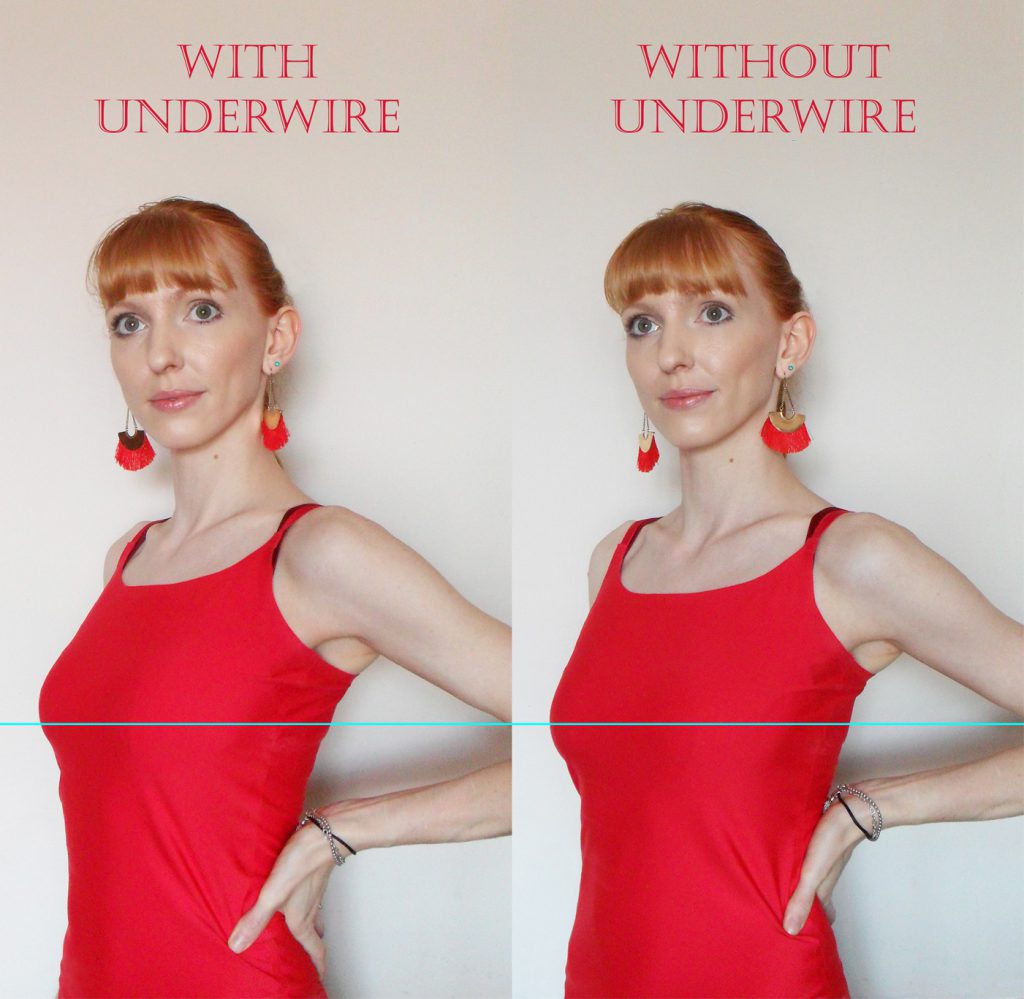
How underwires support the breasts
And finally, that all-important function of an underwire: support! An underwired bra works like a cantilever – if you’re not sure what one is, a diving board is a good example. By being fixed firmly in place at one end, it can support weight along a length that isn’t being directly supported from below. In a bra, the underwire is the fixed ‘strong point’ which is allowing the cup fabric attached to it to support more weight.
Overall, this has the effect of counteracting gravity to lift the breasts from below, so that less weight gets put on the straps / your shoulders that are supporting from above. While you might find a wireless bra that’s supportive in terms of preventing bounce, by simply pulling your bust in firmly against your chest, you really can’t beat an underwired bra for upwards lift!
How to find underwires that are comfortable
So, how to find a wired bra that doesn’t hurt? There are three things I’d recommend. First is that ‘scooping’ technique I mentioned above, every time you put a bra on. This ensures the underwires aren’t sitting on top of any breast tissue – if they are, chances are they’ll start to dig into it through the day.
Second is to double check that you’re wearing the correct size. If the cup size is too small, the wires will be too short to fit around your whole breast root and will end up prodding you somewhere along the side. And if it’s too big, the wires will be overly long and could poke at the underarm.
And finally, experiment with different underwires until you find one that works for your body. Different styles come up higher or lower at the inner or outer sides, or flex more than others. So if going wire-free is not for you, it’s definitely worth trying out different bra styles and different brands until you find one you like.
Still have questions about bra underwires? Pop them in the comments section below!
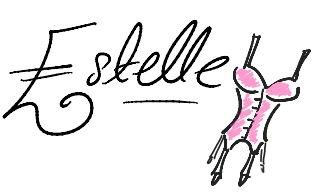
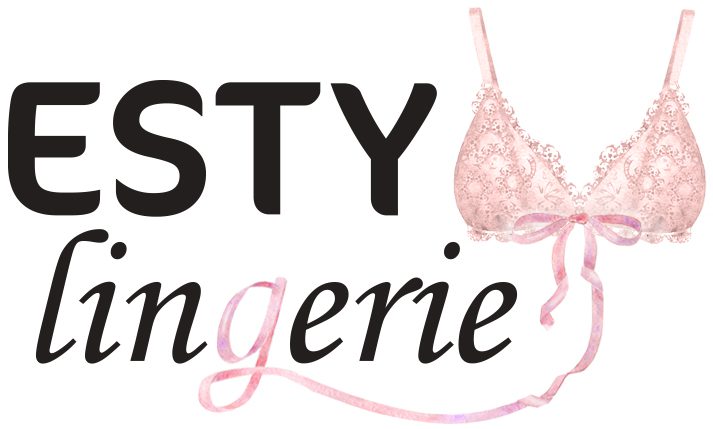
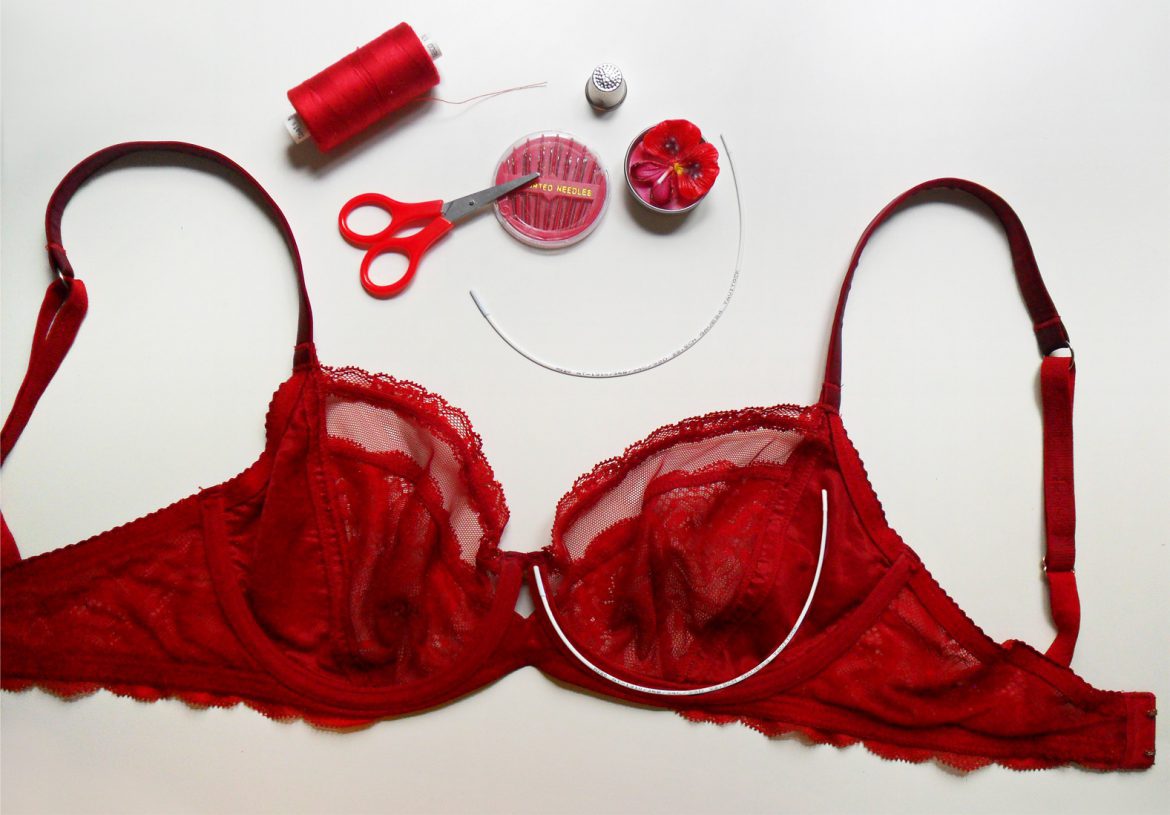
4 comments
I have very wide roots on shallow breasts. The 46 ddd I tried was perfect! Except the cups flapped at the wind in the top part. Should I try a 3/4th cup? The style I tried looked like a balconette but with a bit of lace on top, so not quite a balconette.
Hi, it’s hard to say without seeing the specific bra style, but a balconette is generally a good style for shallower breasts because the cups don’t come up very high (taller cup styles, such as full cups, will tend to gape at the top because there’s not enough tissue to fill them out there). That said, not every balconette is going to be shaped exactly the same and maybe the lace made this one taller? So it’s worth trying different styles/brands.
I have a shallow breast shape and find my best fit with these styles:
– unlined cups rather than moulded
– ones with *stretch* lace trims, which molds to your body better
– plunges where the straps and cups are all one piece (see Myla’s Columbia Road bra for an example), the shape helps to pull the cups in towards your body
Hope this helps!
I love one bra I Own but the Brand has been washed off. I wish I knew where I got it so I can get more since it’s begun to rip in back. It has a wide underwire that starts and stops at the same point on both sides (from the inside to the outside breast line). The outside even has a seam of 3/4 inch that is free of any wire so it doesn’t poke my breast tissue underarm- my favorite part! The tops of the bra line look like a Hersheys kiss at the straps. Know where I can get an underwire bra shape like this?? Please help!
Hi Tauna, the underwire shape you describe might be what’s called a demi underwire, but it’ll be hard to search for online as the results will be filled with demi *bras* (which refers to how much the cup covers). Brands don’t usually describe the underwire type in their product descriptions! The ‘Hershey’s kiss’ bit though sounds like it could be a high apex cup shape, so hopefully that will give you a starting place to search for something similar.